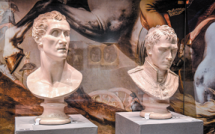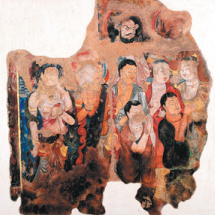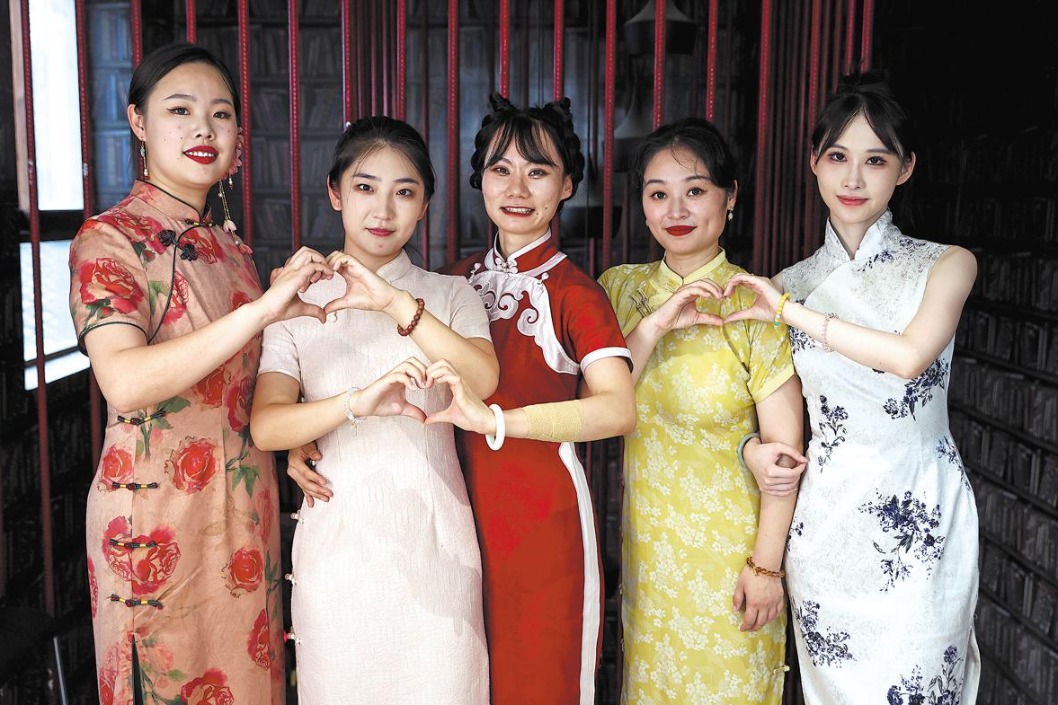what's on

Raphael's works
Having a view of works by Raffaello Sanzio da Urbino, known as Raphael, would be a life-time accomplishment for art lovers. Two paintings attributed to Raphael, one of the most talented artists of the Italian Renaissance, are at the heart of a Beijing exhibition at the Guardian Art Center through Oct 14. The Meet Raphael: Masterpieces from Renaissance to Neoclassicism exhibition has brought to local audiences the oil work, Saint Luke the Evangelist Paints the Virgin in the Presence of Raphael, and a detached fresco, Putto Reggifestone, both attributed to Raphael and in the collection of the National Academy of Saint Luke in Rome. In the former painting, Raphael painted himself together with the Virgin Mary, the mother of Jesus, and Saint Luke the evangelist, conveying a strong sense of purity and sanctity. Moreover, one can compare Raphael's self-portrait in the painting on show to another self-portrait in a reproduction of the masterpiece, The School of Athens. The exhibition also unveils a panoramic view of the time Raphael grew from an apprentice to a prominent painter and architect. It shows documents of Raphael's architectural designs to tell about the formation of his aesthetics during the Renaissance. It also gathers paintings by Raphael's contemporaries to provide a glimpse of the standards and philosophies to which painters at the time lived up.
10 am-6 pm, Tuesday to Thursday, Sunday; 10 am-9 pm, Friday and Saturday. 1 Wangfujing Dajie, Dongcheng district, Beijing.
Xinjiang mural art
Dancing with Xinjiang, an ongoing exhibition at the M Woods 798 through Aug 29, juxtaposes the museum's collection of artifacts found in the Xinjiang Uygur autonomous region and works or fresco reproductions by contemporary artists. It is a celebration of the dynamics of the history, art and culture of Xinjiang, attributed to generations of painters, musicians, craftsmen, dancers and scholars over centuries. Also it examines how Xinjiang's rich heritage has continued to nurture modern artists and cultural institutions, inspiring them to deepen research and studies on Xinjiang's culture from multiple dimensions. Some artists at the exhibition have spent years copying the vivid mural paintings of centuries in Xinjiang, or looking for detached Xinjiang murals now being kept overseas and making reproductions of them.
11 am-7 pm, closed on Mondays. D-06, 798 art zone, 2 Jiuxianqiao Road, Chaoyang district, Beijing.
Yangzhou in focus
The Take the New Standard exhibition, at the He Xiangning Art Museum through Oct 10, reflects the rise and fall of fine arts in Yangzhou, a prosperous town in Jiangsu province, for over three centuries since the beginning of the Qing Dynasty (1644-1911). It shows 80 classical Chinese paintings by preeminent artists from Yangzhou, including the Eight Eccentrics of Yangzhouan art group active in the 18th century-whose innovative style was later adopted by modern Chinese artists. Yangzhou benefited from the booming businesses along the Grand Canal, especially salt trade. It attracted not only merchants from across the country but also intellectuals and painters who created brilliant culture and art there.
9:30 am-5 pm, closed on Mondays.9013 Shennan Dadao, Nanshan district, Shenzhen, Guangdong province. 0755-2660-4540.



Today's Top News
- China's FDI inflow tops $700b since 2021
- Australia, China set to bolster steel partnership
- South China Sea ruling slammed as illegal, invalid
- US' secondary sanctions no use in ending crisis
- 'Zero-tariff' a blow to zero-sum game
- Lai's lectures blare division, no 'unity'






























